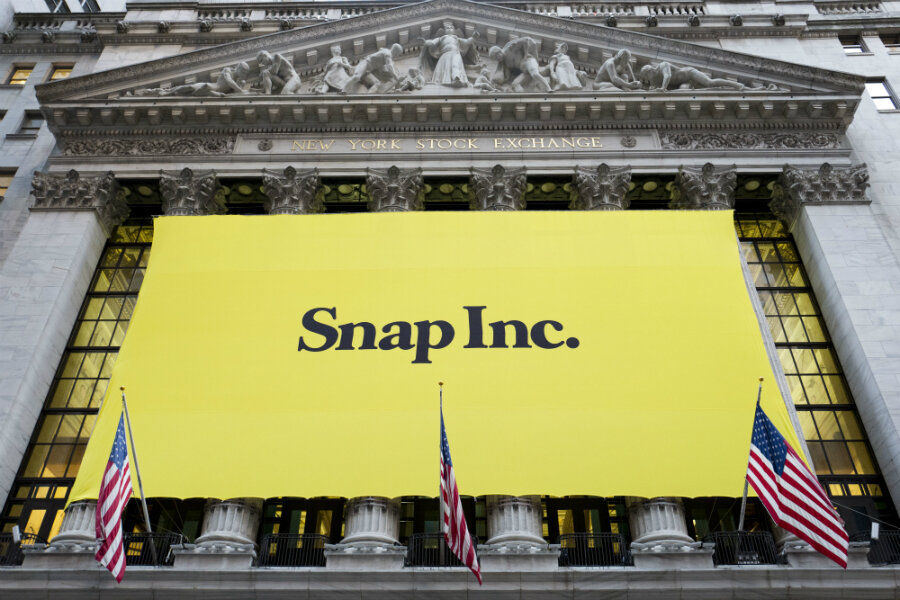How a California high school suddenly earned millions from Snapchat
Loading...
A California high school just made $24 million after selling shares in Snapchat’s initial public offering, shortly before the company’s New York Stock Exchange debut on Thursday.
In 2012, the board of the St. Francis private high school in Mountain View, Calif., shrewdly invested $15,000 of seed money in the app that allows people to send photos and videos that quickly disappear, after an invitation from a school parent, who is a venture capital investor.
The school then sold two-thirds of those shares at $17 a pop in Snap’s initial public offering (IPO) on Wednesday, according to Quartz. The shares then rocketed up 44 percent to close their first day of trading on Thursday at $24.48.
"The school's investment in Snap – which this morning announced the completion of its IPO – has matured and given us a significant boost," said the high school president, Simon Chiu, in the letter, according to the Associated Press.
Although Snap is undeniably popular, with roughly 100 million daily users, its single revenue source – advertising – has given some investors reservations, similar to the lead-up to Facebook's 2012 IPO. Still, judging by its second day of trading, those concerns seem to have evaporated. At 10:49 a.m EST on Friday the stock had leapt another 14.38 percent from its closing price on Thursday, trading at an $28.
Snapchat was founded in 2011 by Stanford University students as a service that delivers text messages that disappear within seconds. Today it is part of the so-called Silicon Beach movement, having progressively bought up property in southern California’s Venice Beach.
The company’s relationship with the seaside community, however, has been mixed.
Snapchat started out occupying a single seaside bungalow but has since expanded to multiple properties within Venice and adjacent Marina del Rey, leading some residents to accuse it of turning the traditionally funky neighborhood into an office park, driving up rents and driving out long-time lower-income residents.
"I would rather see them get a campus," Venice Beach resident Barbara Londale, told Reuters at a gathering of protesters outside Snap’s offices on Thursday. She said Snap has purchased 30 properties up against the Venice beachfront sidewalk that is home to various eateries, bars, shops, and the neighborhood's famous bohemian stretch of outdoor vendors.
The company responded to such complaints in a statement, insisting that it has worked "closely with local schools and nonprofits to be a good neighbor."
"We don't just have our headquarters here; many of us also call Venice home," Snap spokesman Kevin Galvin said. "No one could have anticipated how quickly we've grown, and we have already begun focusing our future growth outside of Venice."
But that doesn't mean Snap hasn't made efforts to improve it community, as The Christian Science Monitor reported last year:
Tech startups are sometimes known for buying up real estate and shifting community demographics, and Snapchat is no exception. It often carries the blame for changing its Venice community: gentrifying the neighborhood, driving up rents, and displacing those who have lived in the gritty seaside town for decades.
But some local groups such as St. Joseph Center, Safe Place for Youth, and Grand View Boulevard Elementary saw the influx of Snapchat techies into Venice as an opportunity. Over the past three years, the company has supported the arts, built showers for Safe Place for Youth, and sought to help with homelessness and income disparity, according to these groups. [Last] year Snapchat, which is funded by $1.4 billion in venture capital and tens of millions in ad revenues and in-app sales, has allocated more than $500,000 to community service.
This week Snap raised $3.4 billion in its IPO, giving the company a market value of more than $28 billion.
"While the full impact has yet to be realized, the return on this investment will allow us to accelerate the goals of our strategic plan, which emphasizes our commitment to make Catholic education more affordable and accessible to our community, recruit and retain outstanding faculty and staff, and develop innovative programs and facilities," said Mr. Chiu, according to KTVU.
This report contains material from The Associated Press and Reuters.








